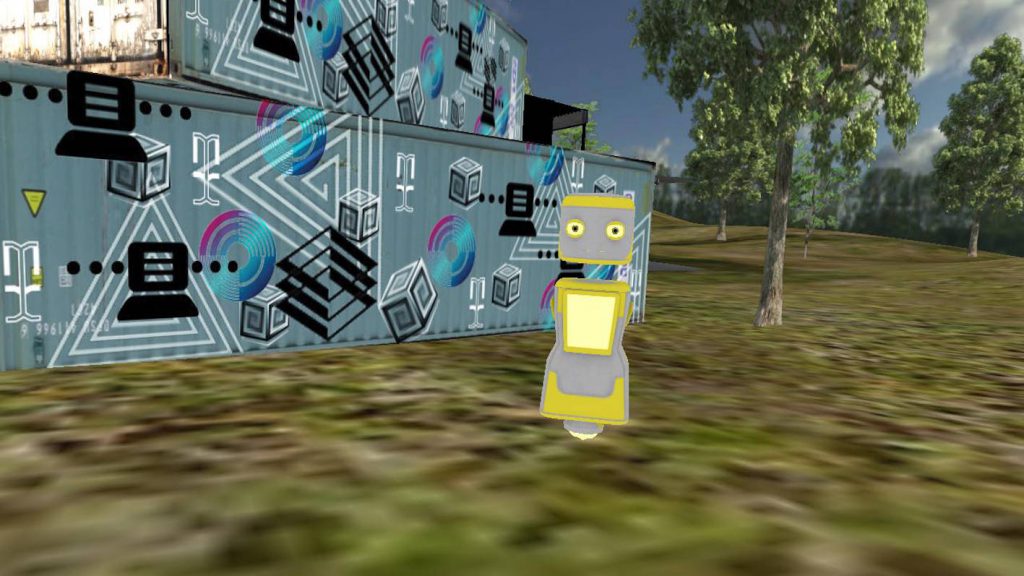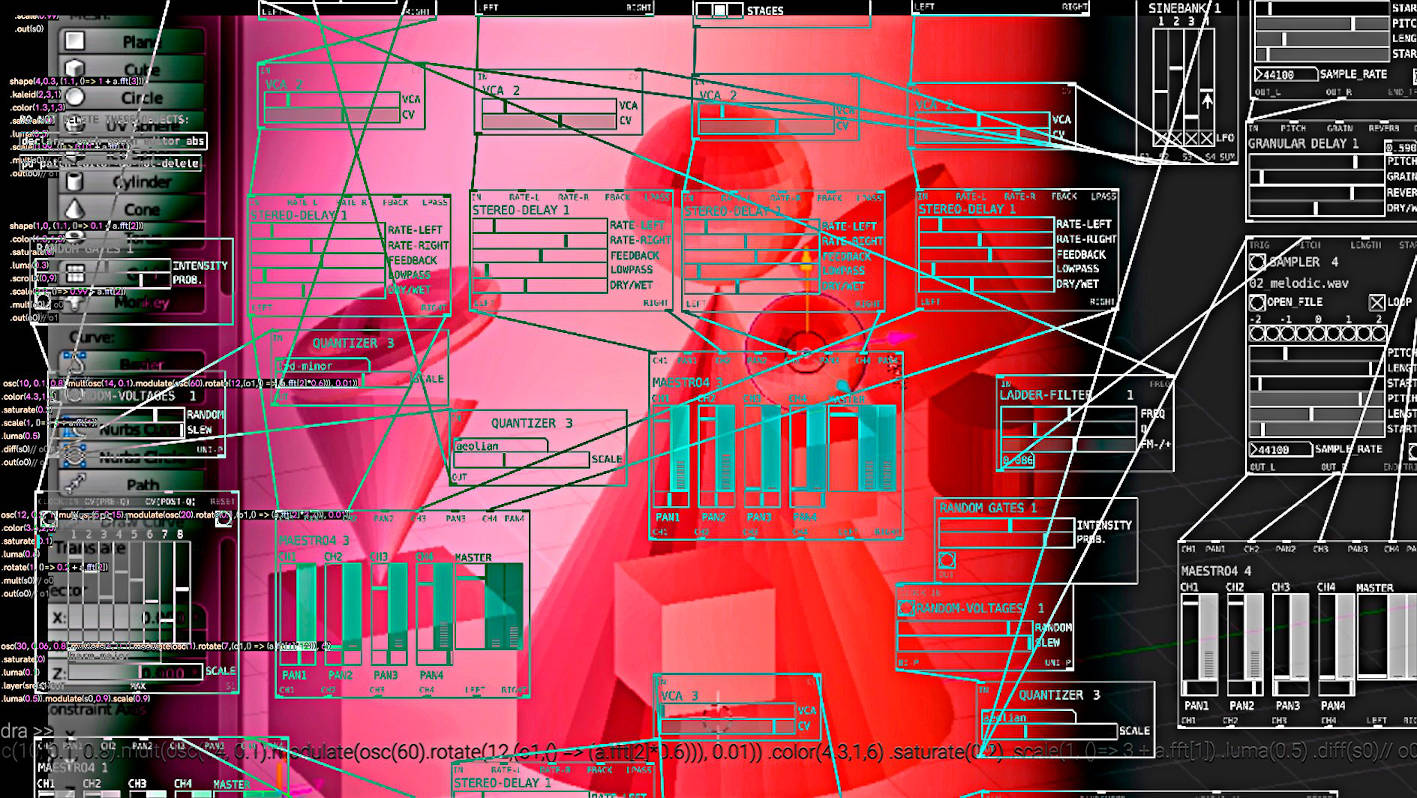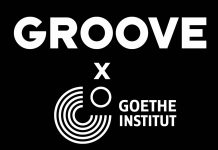All Photos: Courtesy of the Artists
Lea la versión en español aquí.
Creating music through live coding seems like a revolutionary act. Working only with free software and self-written code, producers have freed themselves from existing boundaries in creation and performance as well as from capitalist companies who monetize creativity by providing the tools. This potential to hack the system attracts a growing number of women, coding their way into the scene. Steffanie Torres talked to some leading figures who are about to change the face of Mexico’s electronic music scene for good.
When you dance in the dark, it doesn’t matter where the music is coming from. The body naturally connects, vibrates and enjoys the rhythm that makes it feel alive. Electronic music has brought all sorts of genres, rhythms and dances to the dance floor, each created thanks to technology. Today anyone with a laptop can make music, drawing from a seemingly infinite pool of sounds. Yet for some, settling for preset software or hardware with a built-in soundbank is no longer an option.
With advancing technology, societal bounds shifted as well. More and more women are claiming their rightful seat at the table, challenging existing patriarchal structures in all aspects of life. At the moment, Mexico ranks 25th within the Global Gender Inequality ranking of the World Economic Forum. But, there is hope. The last 15 years have been a great boost for women seeking to dedicate themselves to science and technology, thanks to the different feminist struggles for equality in the technology industry worldwide. The parallel evolution of live coding can be seen as one of the developments paving the way to gender equality.
With an enormous desire to break established norms and access the core of any technological configuration, live coding is a visual and sound creation technique that modifies algorithms. Therefore, producers no longer need physical synthesizers or musical instruments to fill a space with rhythm and dance music. Instead, they are able to program a series of words, numbers and formulas with the help of programs like Supercollider, Hydra, TidalCycles, Fluxus, Chuck and PureData. By challenging the process of music production at its core, live coding seems to hold a lot of potential to shake up societal norms, which is why there are a significant number of women at its forefront. I spoke to some of the leading women of the Mexican live coding scene.
Community First: The Evolution of a Vivid Scene
In Mexico, live coding first emerged in 2010 within the audio workshop of the Multimedia Center of the National Center of the Arts (CENART). According to live coding producer Hernani Villaseñor, the first live coding show was called „The Night of the Fireflies“ and held in Mexico City on November 8th, 2013. Villaseñor had been curating the show himself, presenting audio and video projects by the LiveCodeNet Ensemble, lqra, ‚bo, .buj, Diego Acevedo, Karen del Valle, Dora Bartilotti, Rodrigo Ramírez (VJ), Israel Noguez, and Mauricio Colin.
As with most scenes, working collectively proved to be the most effective way for the genre to grow. Toplap is one of the largest live coding communities worldwide and thanks to the Multimedia Center, the Toplap Mx node also arose. Toplap started as a small group on Facebook created by Rodrigo Velasco where people could connect and share learnings with like-minded musicians interested in this type of production, and grew into a real community over the years.

“Thanks to the inspiration of Jorge Ramírez, Ernesto Romero, Tito Eduardo Obieta, EHO, Hernani Villaseñor, and Alexandra Cárdenas we met. We are dedicated to organizing events with different communities, always linking the philosophy of sharing knowledge about science, technology and, of course, live coding. After a while, Rodrigo had to move to Montreal and Malitzin Cortés alias CNDSD suggested creating the website and growing our networks of contacts. It was important to leave the private group and open up to a new audience, as the number of events and initiatives increased”, shared Malitzin Cortés and Heliodoro Santos, members of Toplap México.
Personally, I first discovered live coding in 2017. I attended a party organised by different electronic music groups in Mexico City. After a downtempo DJ, suddenly, a lot of letters appeared on a screen, reminding me of the moment when a computer crashes and only shows a lot of code while you desperately press enter trying to fix it. The sound was loaded with breaks and deep atmospheres, exactly the same as if you were listening to a synthesizer. Yet, there weren’t any on the stage. After a few minutes, a friend came over to explain that this was live coding. Otherwise, I would have never even realized it.
Mexico has also hosted a couple of editions of Algorave, the most important event in the live coding scene. Algoraves bring together live coders from around the world who use code to create live sound and visual effects. The big screens are the main stage, where the producers share their work openly with everyone, creating a unique sound which becomes unrepeatable. Not every party with a live coder in their lineup is an Algorave, but it is surprising that every day there are more and more live coders performing at electronic music parties – well, or rather, on electronic zoom transmissions these days during the pandemic.
A Musical Battle for Gender Equality
Even though coding, programming and mathematics – crucial skills for any live coder – are traits which might be considered to be more „masculine“ in a very cliché gender-stereotypical mindset, there are a lot of women at the forefront of the genre. Colombian composer, programmer and live coder pioneer Alexandra Cardenas is probably the most popular one, being one of the most inspiring forces for many women in the scene.
For Marianne Teixido, a producer from Mexico City, Alexandra Cárdenas was a huge influence and role model. “When I began to approach live coding, there were no workshops. The few people who knew how to do it did not want to teach you. They told you to read the manual. It wasn’t until I met Alexandra Cárdenas that I started making sound with TidalCycles.” Shaped by this experience, Marianne Teixido dedicated herself to sharing knowledge about live coding in Mexico.
„The poster of the show featured the names of the men who created the audio in huge letters. On the other hand, Jessica, who was in charge of the visuals, was only at the bottom of the poster in very small letters.“
Marianne Teixido
Besides being interested in the art itself, the producer and multimedia artist got into live coding to battle gender inequality and misrepresentation in the scene. “In 2017, I travelled to an Algorave in Colombia. I was only going to visually document the piece that Emilio was going to present as Reggaetron. But things happened that I did not expect, and they seemed to me to be linked to gender inequality. I felt that the creation of the visuals did not receive enough attention. The poster of the show featured the names of the men who created the audio in huge letters. On the other hand, Jessica, who was in charge of the visuals, was only at the bottom of the poster in very small letters”, Marianne Teixido recalls.
History has been written by men, which is why the artistic work of many of the most outstanding women of their time has been erased and minimized. “Now electronic pioneers are recognized, which gives us confidence and strength knowing that we have always existed and have always been geniuses. I dare to say that the work of women in the musical field is getting recognized more and more, including in live coding. I am grateful for my time because if I had lived in the 60s or 50s, I would have existed with my same intuition and expertise but it would have been very difficult to transcend. The system would not have let me tell my story, nor that of my colleagues in creation”, shares Malitzin Cortés.
Besides paving the way to further equality within the creative field, live coding holds the potential to question the capitalist system as a whole. Questioning yourself is the first step to get into live coding. Questioning societal norms might be the next. Questioning the system within which most digital software work seems like the ultimate step. Hacktivism was born to rebel against an established system. A rebellion which is at the core of live coding.
“I wondered what implications it had that the software I was using was someone else’s. It led me to delve into the question: what is software?“
Irene Soria
“All the tools that we had been using before were proprietary to a company. It was normal and few questioned it. I began to think about the consequences of the digital programs that were not mine. I wondered what implications it had that the software I was using was someone else’s. It led me to delve into the question: what is software? I understood that code is made of letters, a mix between mathematical numbers and the English language. It was basically that curiosity that got me into code“, says Irene Soria, PhD in Feminist Studies, and free software and culture activist.

Once curiosity is sparked, there is no way to stop it. Knowing that you are capable of transforming words and numbers into sounds, the only thing missing is creativity. Libertad Figueroa, a live coder from Mexico City, began her career in 2012 with a workshop at the Multimedia Center in the Audio Workshop with Hernani Villaseñor and Ernesto Romero. She was increasingly fascinated by the practicality of live coding. Eventually, she became part of OFFAL (Orchestra For Women At Laptops), an international women-only collective formed in 2015.
What live coder Libertad Figueroa liked most about the production technique is that it doesn’t require formal training in music or programming, nor do you have to fully speak the language of code to produce music. You just need an interest in the field, patience, a desire to overcome that fear of mathematical structures, and to realize that programming is not as hard as it may seem at first.
“Playing with people I already followed and admired gave me a boost. The work with OFFAL is 100 per cent online. Only once there were more than two people present at a concert, as far as I remember. It was at the International Live Coding Conference in 2016. With them, I have played on stages where I would never have imagined playing without leaving my home.”
A Matter of Accessibility: Hack the System
Although live coding lives through the screen and free software and therefore seems approachable for anyone interested, it actually is not. According to data from the National Survey on the Use of Information Technologies in Homes (ENDUTIH), only 48 per cent of the Mexican population has internet access and only 25 per cent of those have access to a device at home. Accessibility, therefore, is a big topic. Especially, when we talk about looking for workshops in remote places far from the centre of Mexico City.
One solution to this problem of accessibility, if you have the possibility of accessing the internet, could be around how one approaches open technologies, free tools of marketing and big brands, suggests Irene Soria. “You have to tell the girls that you don’t need to have a Mac. You don’t need to have a super powerful computer to be able to do live coding. You could build your own computer. You could use Raspberry. You could use relatively cheap technology and lightweight software to narrow this digital divide a bit.“
„We must rethink the social and economic conditions that exist in Latin America to work with free software.“
Marianne Teixido
Marianne Teixido also dedicates her work to tackling those technological inequalities. With her Piranha Lab project, she seeks to share her knowledge of code in a supportive and patient way. Yet, accessibility is a big problem. “You may have the knowledge, but not the money to buy the latest Mac to run a graphics card that displays 4K graphics or something. I tried to show that different problems can indeed be solved with the means at hand. We must rethink the social and economic conditions that exist in Latin America to work with free software.“
As living during a global pandemic has taught us, being digitally connected today seems to be more important than ever. Live coders might be the pioneers in tackling technological inequalities, changing societal ones along the way. Daring to question and look behind existing boundaries might not solve all the problems of inequalities in technological access and society as a whole. Yet, if we think about the history of electronic music, working your way around technological limitations has always been the soil of creative growth and innovation. If the women hacking the system of music production manage to hack the system of society in the same way, there definitely is hope for the future.
This article is part of the Global GROOVE: Electronic Music Journalism series, hosted by GROOVE in collaboration with the Goethe-Institut. Read all other articles here.
Steffanie Torres is a music writer based in Mexico. She has an online radio show and a music blog called Constelaciones en la Piel, where she focuses on the mexican electronic-music industry, as well as on highlighting female producers.




